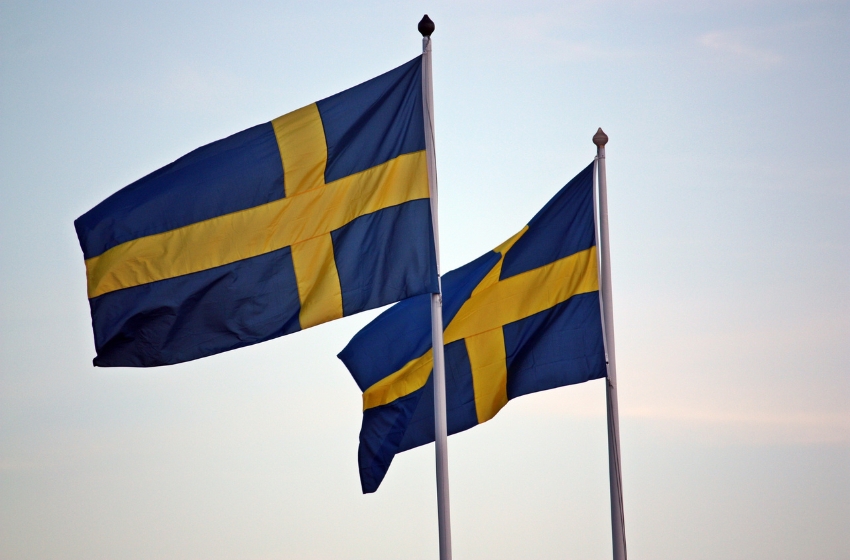The traditional products, local breeds, and know-how collected by the Ark of Taste belong to the communities that have preserved them over time. They have been shared and described here thanks to the efforts of the network that that Slow Food has developed around the world, with the objective of preserving them and raising awareness.
Hutsul Guslianka

Guslianka is a product made from sour milk, produced in the Eastern Ukraine. It is made from boiled sheep’s or cow’s milk from local Carpathian breeds. This is a traditional drink, and this is why the local Carpathians – the Hutsuls – live so long.
Fresh, still warm milk, warmed up to 40-45 degrees, is poured into open ceramic or glass vessels and left for a day and a night to rest in a dark, not too humid place, at temperature no higher than 5 C. The next day the milk (still not sour but already thickened) is poured into ceramic jars, lubricated with cream or sour cream. One day later guslianka is ready. Guslianka has a very refined taste and after-taste and is perfect for hot weather as it has refreshing properties. It contains a small amount of alcohol and causes a light tickling in the throat. Becuase the preparation of guslianka does not require boiling, the product retains all of its nourishing properties.
Guslianka is prepared for personal use but with the decreasing size of local sheep and cow herds and the increased production of industrial yogurts products, the tradition of preparing guslianka has almost disappeared.
Guslianka can be used as a separate dish or as an addition to traditional dishes and for the preparation of cold drinks (with mineral water) and sauces for vegetable salads and fruit desserts.
Poltava Millet Kruptsi

Poltavshchyna is a region in Ukraine situated at the right bank of the river Dnieper. The climate of the region is determined by its location in the temperate climate zone, humid continental climate type contributes to cultivating cereals such as proso millet. The local proso is used to produce Golden millet that was traditionally used for making Poltava porridgeб "Poltavska kachana kasha" in Ukrainian. It is a ritual porridge that used to be cooked since the end of the XIX century till the first half of the XX century mainly on holidays. It is known that the porridge used to be cooked in only two districts – Dykanka and Zinkiv. Eggs, millet made of local varieties of proso and wheat flour is used for making the Poltava porridge. For example, it is necessary to take 28 eggs, 250 grams of millet and 1.5 kg of flour to make 1 liter of the porridge.
Poltava porridge is prepared by gradually adding 1 tablespoon of whipped eggs and flour to millet until every grain is mixed with eggs and flour and becomes the size of a soy bean. This process takes 2-3 hours. Then after a thin layer of cereal is spread on fabric, it is being dried a little.
This porridge gradually becomes out of use, the recipe and techniques are being forgotten.
Riska Cattle

There are still some hard to reach areas in the Ukrainian and Romanian Carpathians where people live from subsistence farming, continuing to work on family farms where they raise domestic animals like horses, cattle, pigs and chickens.
Among the old breeds is the riska, the Carpathian cow. It is found in the Transcarpathian area of Ukraine, and in the counties of Maramures, Bucovina, in Moldavia, and in the high mountains of central Romania.
It is a small sized breed (between 110 and 115 cm height at withers) and of compact and robust stature. The head is small, but long, with short and thin upward-pointing white horns with black tips. The eyes are expressive and the tongue is rough and dark blue. The muzzle is light in color, as is the dorsal line that extends along the entire length of the spine.
The color of the mantle is a mix of grey, dark brown and red. The mucous membranes are dark, while the inside of the ears is usually reddish, as are the long hairs growing between the horns.
The udder is not very developed, with small teats covered in thin hair. Milk production is about 3 to 6 liters per day and it has a rich and sweet flavor.
In the beginning of the XX century, before the introduction of Swiss Braunvieh, this was the predominant cattle breed in the Transcarpathian area, because it was well adapted to the rigid climate and, despite not giving much milk, it is high in proteins and fat and does not require large quantities of food.
It is said that that the Carpathian cattle descends from the old mountainous breed risca, and shares many traits with other old breeds, for example busha cattle.
Rye Wedding Horses Biscuit

Poltava rye flour is used for making a very symbolic biscuit – rye wedding horses (ukr. житні веÑільні коники) which is closely connected with the local traditions. The recipe is very simple: flour, water, sour milk, sugar, salt. Make a stiff dough, form horses’ figures, boil thoroughly in the sweetened water until they float to the surface. Then bake in an oven until they become light brown. As a result, horses come out a little dry and crispy.
Rye wedding horses were served to the guests of a wedding along with a piece of korovai (wedding bread in Slavic cultures), they were widely spread in Poltava Oblast in the beginning of the XX century. They symbolize that a bride and a groom should be prancing like horses: be healthy and hardworking. They are referred to in some songs of Poltava region:
The matchmaker
Didn’t make horses
Made one but ate it.
Nowadays rye horses are baked very seldom – the traditions of their making and their purpose have been forgotten as well as their recipe.
Shovdra

Shovdra (Shovder) is the traditional name for the pork ham made by indigenous populations of the Carpathian Mountains – Hutsuls, Boykos, and Lemkos. The product emerged as a local way to preserve meat for the family.
Shovdra making usually began when the first frosts came and lasted only during the cold season. When the spring fast ended and Easter came, people took it from the attic, cooked, and ate during the holidays. Usually, on Easter holidays big piece of shovdra was brought to church to hallow.
To make shovdra, one or two pork legs (local white-coloured pig breed), depending on family size, were taken. Skin removed or left, then rubbed with salt, black pepper, garlic and red pepper and placed in a large container and left there for one week (patsuvali), turning occasionally. Then ham was removed from the container and smoked during 2-3 months. In the beginning, people smoked in the house attics (banti). When they relocated to newer houses without smoking room they equipped small smokehouses near the house, and the smoking changed from cold to hot. Ready-made shovdra usually weights 6-12 kg, has brownish-red color and milder or denser texture, depending on the duration of smoking. Mainly men were engaged in its preparation, since it requires physical strength.
Shovdra made part of many traditional recipes, like Paprikash. Cut into cubes shovdra was fried, then mixed with flour, and fried until golden colour. Sour cream, salt, pepper and paprika are added to taste. Paprikash was served with Kulesha (mashed potatoes with the adding of corn flour).
Shovdra was never sold on the market, since the mountainous terrain did not allow the product to be transferred to distance. It wasn’t also necessary, as each family produced the necessary quantity for household use. Currently shovdra’s cooking method is not popular anymore, due to less people living in the area and willing to engage in its preparation, as well as appearance of refrigerators and accessible roads and markets decreased family needs for food self-subsistence. It is not industrially produced, although there are private producers, but they are already more oriented towards the taste preferences of the modern consumer.
To be continued...





















